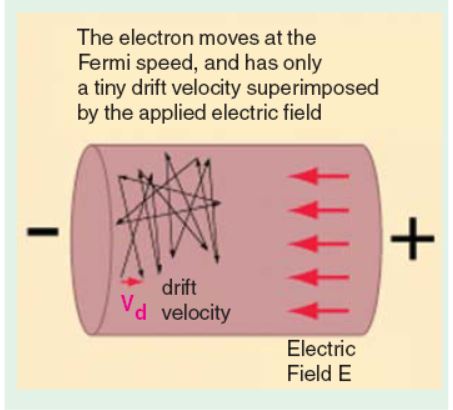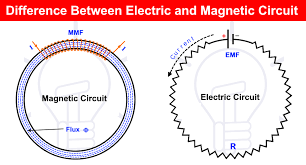Suppose that in a conductor, the number of free electrons available per m3 of the conductor material is n and let their axial drift velocity be ν metres/second. In time dt, distance travelled would be ν × dt. If A is area of cross-section of the conductor, then the volume is νAdt and the number of electrons contained in this volume is νA dt. Obviously, all these electrons will cross the conductor cross-section in time dt. If e is the charge of each electron, then total charge which crosses the section in time dt is dq = nAeν dt.
Since current is the rate of flow of charge, it is given as


Current density, J = i/A = ne ν ampere/metre2
Assuming a normal current density J = 1.55 × 106 A/m2, n = 1029 for a copper conductor
and e = 1.6 × 10−19 coulomb, we get
1.55 × 106 = 1029 × 1.6 × 10−19 × ν
∴ ν = 9.7 × 10−5 m/s = 0.58 cm/min
It is seen that contrary to the common but mistaken view, the electron drift velocity is rather very
slow and is independent of the current flowing and the area of the conductor.
Read article – Electron Drift Velocity
Visit NCERTworld.com for NCERT solutions and Textbook downloads

